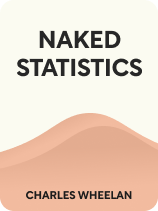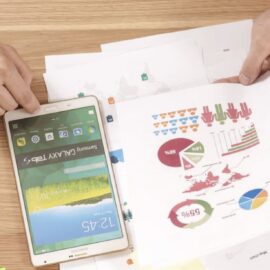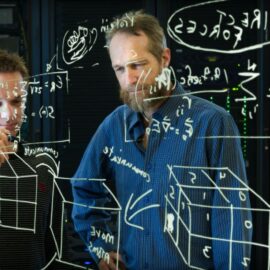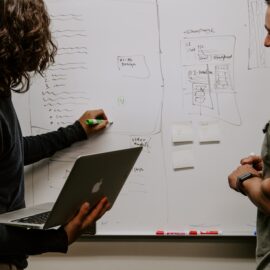

This article is an excerpt from the Shortform book guide to "Naked Statistics" by Charles Wheelan. Shortform has the world's best summaries and analyses of books you should be reading.
Like this article? Sign up for a free trial here .
What’s the difference between correlation and causation? What are the consequences of mistaking correlation for causation?
Just because two variables are correlated doesn’t mean one is causing the other. Correlation quantifies a relationship between two variables, but it doesn’t explain that relationship. This is a crucial distinction to keep in mind, as equating correlation and causation can lead to misinformed decisions.
Here’s why correlation does not imply causation.
Correlation Is Not Causation
The difference between correlation and causation is a crucial distinction to keep in mind. It can be tempting to extrapolate beyond a correlation coefficient, but that will lead to causal conclusions that correlation can’t support.
For example, data might show a positive correlation between owning an expensive car and dying in a plane crash. But if you avoid buying an expensive car because you’re worried that it might somehow cause you to die in a plane crash, you misunderstand the concept of correlation.
There are plenty of reasons why the same people who can afford to purchase an expensive car might be more likely to die in a plane crash—namely because they’re more likely to be on a plane in the first place. Wealthy people may choose to fly rather than drive long distances, take more vacations, or even own and travel on a plane of their own. Therefore, while there may be a relationship between being in a plane crash and owning an expensive car, the relationship is one of correlation, not causation.
As we see in the example above, we need to think logically and critically when interpreting statistics.
Inferring Causation From Correlation
It can be easy to equate correlation with causation even when we know better. Wheelan explains that when the correlation between two variables is particularly strong, or when changes in variables track each other tightly, it can be difficult not to infer a causal relationship.
Tyler Vigen uses comedy to highlight this natural yet problematic tendency in his book Spurious Correlations and on his website. By sifting through mountains of data, Vigen generates graphs that show uncannily tight correlations between unrelated variables. For example, he highlights a nearly 99% correlation between how much margarine the average American eats and how many couples get divorced in Maine. Additionally, his research shows a nearly 99% correlation between the amount of money arcades make every year and the number of people who earn a doctorate degree in computer science that same year.
Vigen’s work has been highlighted by the Harvard Business Review and received positive reviews from the Boston Globe and Washington Post, among others, in part because these ridiculous examples highlight the fact that equating causation with correlation is incorrect, no matter how close the relationship.

———End of Preview———
Like what you just read? Read the rest of the world's best book summary and analysis of Charles Wheelan's "Naked Statistics" at Shortform .
Here's what you'll find in our full Naked Statistics summary :
- An explanation and breakdown of statistics into digestible terms
- How statistics can inform collective decision-making
- Why learning statistics is an exercise in self-empowerment






